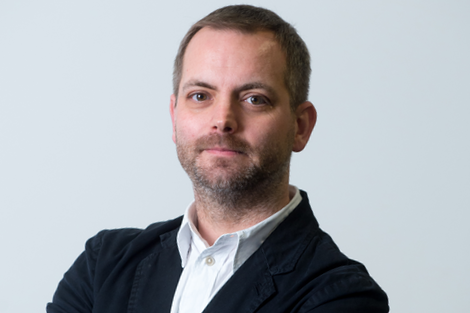
K7 Media’s Projects Director Phil Birchenall reflects on the world of TV apps, skinny bundles and the wave of SVOD platforms currently emerging.
I cut the cord recently. It felt good.
For the last time I switched off my set-top box and packed it away in the loft, then unboxed the new Apple TV and waited for it to boot. You’ll be pleased to know that I wasn’t instantly transported to a post-broadcast, app-driven utopia: life without linear felt different but the same in equal parts.
As you also probably work in TV you might not necessarily want to try this at home, but I’m an atypical consumer, the earliest of early adopters. My curiosity around new technologies and the impact of these on how we consume entertainment forces me to tinker with the boundaries sometimes.
My wife rolled her eyes as I told her we no longer needed the TiVo box. Partly sceptical and partly resigned to my digital distractions, I guess she was expecting that the experience might be alien, and critically that we’d miss out on much-loved shows and that reassuring comfort the schedule provides.
After installing a couple of apps, Netflix, BBC iPlayer and the free-to-air channel streamer TVPlayer, we were on familiar ground. Before long I was zipping across live TV channels and dipping into catch-up. My better half was still a little baffled, but my precious four-year-old had already got the hang of asking Siri to “Play Paw Patrol.”
Make no mistake, 2016 will be marked by the relentless march of evermore ‘niche-y’ SVoD platforms.
Set against the backdrop of widening consumer adoption of connected devices, smart TVs, tablets and streaming boxes like mine, we’re seeing an explosion of SVoD services in the marketplace. On the one hand we have the catch-alls; Netflix and Amazon offer a mix of the familiar and the compelling, the kind of shows your colleagues and friends are watching. And on the other, we have the niche players: Hopster and DisneyLife to keep said little ones quiet, Mubi for the discerning movie buff who struggles with too much choice and HorselifeTV for the equine lover in all of us.
Make no mistake, 2016 will be marked by the relentless march of evermore ‘niche-y’ SVoD platforms, catering for every whim and interest in the era of apps, not channels.
But with £3.99 for this and £7.99 for that, the monthly fees quickly ratchet up. You have to wonder what this looks like to the consumer and where it might logically end.
How many SVoD subscriptions will your average viewer stand, given they’re likely to be already tethered to a package of channels dictated by their cable or satellite provider? Or to look at this another way, why pay a premium for a bunch of stations carrying shows you largely don’t want to watch, when you could tailor a personalised package of services that genuinely appeals to you and your kin?
If I was in the business of selling boxes packaged with channels right now I’d be thinking very carefully about my medium-term strategy.
The pay TV operators of recent times were successful by making it easy for viewers to subscribe to ‘kind of’ what they want to watch, but I can’t help thinking tomorrow’s big players will be those splicing a skinny bundle of generic ‘live’ channels together with a bouquet of SVoD services, where consumers pick and choose according to their own tastes.
Sky’s forthcoming Now TV hardware upgrade combines a hybrid of traditional linear channels alongside streaming services, however these are fundamentally tied to the Sky ecosystem. As consumers begin to have a choice of the box they use to bring TV into their living room they will demand more control over the services they can access through them. This may not bode so well for the locked-down model of old.
In a world of near infinite viewing options then, the question of what to watch, and when, inevitably gets ever harder to answer.
For most of us, myself included, primetime is still primetime. Late in the day we still want to escape with the thrill of a big drama, it’s just not necessarily the same big drama our neighbours are watching. At 20.00, a cord-cutter like myself might want to skip that easy-watching diet show in favour of a healthy snack of gadget fodder, courtesy of the Mashable channel. Outside of that, the schedule is still there, filling in the blanks with a dependable mix of ‘big nights in’ and familiar favourites. The drums may be different but we’re still playing the same rhythm.
Why pay a premium for a bunch of stations carrying shows you largely don’t want to watch?
So when BBC3 went online, it seemed like an opportunity missed not to have included ‘scheduled’ programming to help us all transition from the old to the new.
And so, back to my living room, eight weeks into life without cable. I’ll occasionally do something really annoying, like opening up the flight tracking app at a key moment in Making a Murderer so I can see where the plane that just flew over is heading. Those distractions aside, the cord-free TV experience is the new normal. We’re excited by the ever-expanding, yet increasingly relevant choice of shows we have, and distinctly fluid means of navigating our oceans of content.
Viewing is in flux at the moment, but as the experience of the last two months tells me, humans naturally gravitate towards curation and order. To think of this app-driven future as TV’s great disruption might be, if you pardon the pun, a little over-the-top. A change, yes, but the era that beckons looks to be more of a natural evolution for the medium we still quaintly call television.
This article first appeared on C21 Media.
